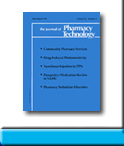 |
 |
ADVERSE REACTIONS TO
METOCLOPRAMIDE IN YOUNG CHILDREN: A 6-YEAR RETROSPECTIVE STUDY AND REVIEW OF
THE LITERATURE
Matityahu Lifshitz and Vladimir
Gavrilov
To request full article click here.
OBJECTIVE: To report our experience with children admitted to the emergency department between the years 1994 and 1999 for adverse reactions to metoclopramide.
PATIENTS AND METHODS: The medical records of 52 children admitted for adverse reactions to metoclopramide were analyzed retrospectively. All the patients had been prescribed metoclopramide for the treatment of nausea and vomiting.
RESULTS: The patients' ages ranged from 1.5 to 4.5 years (median 2.4 y). All had manifested various dystonic symptoms that occurred several hours after ingestion of 1 or 2, rarely more, doses of metoclopramide. Thirty-two patients had received metoclopramide 0.1 mg/kg/dose, 11 children 0.2 mg/kg/dose, 7 pateints 0.3 mg/kg/dose; for the remaining 2 children, the dosage was not known. The prominent clinical sign in all the children was oculogyric crisis. All the patients who had received a two- to threefold overdose, as well as those infants for whom the dosage was not known, experienced drowsiness. All 52 children were treated intravenously with a single dose of procyclidine hydrochloride 0.1 mg/kg. Extrapyramidal symptoms were abolished 15–30 minutes after treatment, and the children were discharged home 2–3 hours after treatment, free of symptoms.
CONCLUSIONS: Young children are especially susceptible to adverse reactions from metoclopramide, particularly oculogyric crisis. Therefore, physicians should use this drug with great caution. Our study indicates that it is fairly safe to treat oculogyric crisis in children with a single intravenous injection of procyclidine hydrochloride 0.1 mg/kg.
J Pharm Technol 2002;18:125-7.
To request full article click here.
|
|
|
||
|

